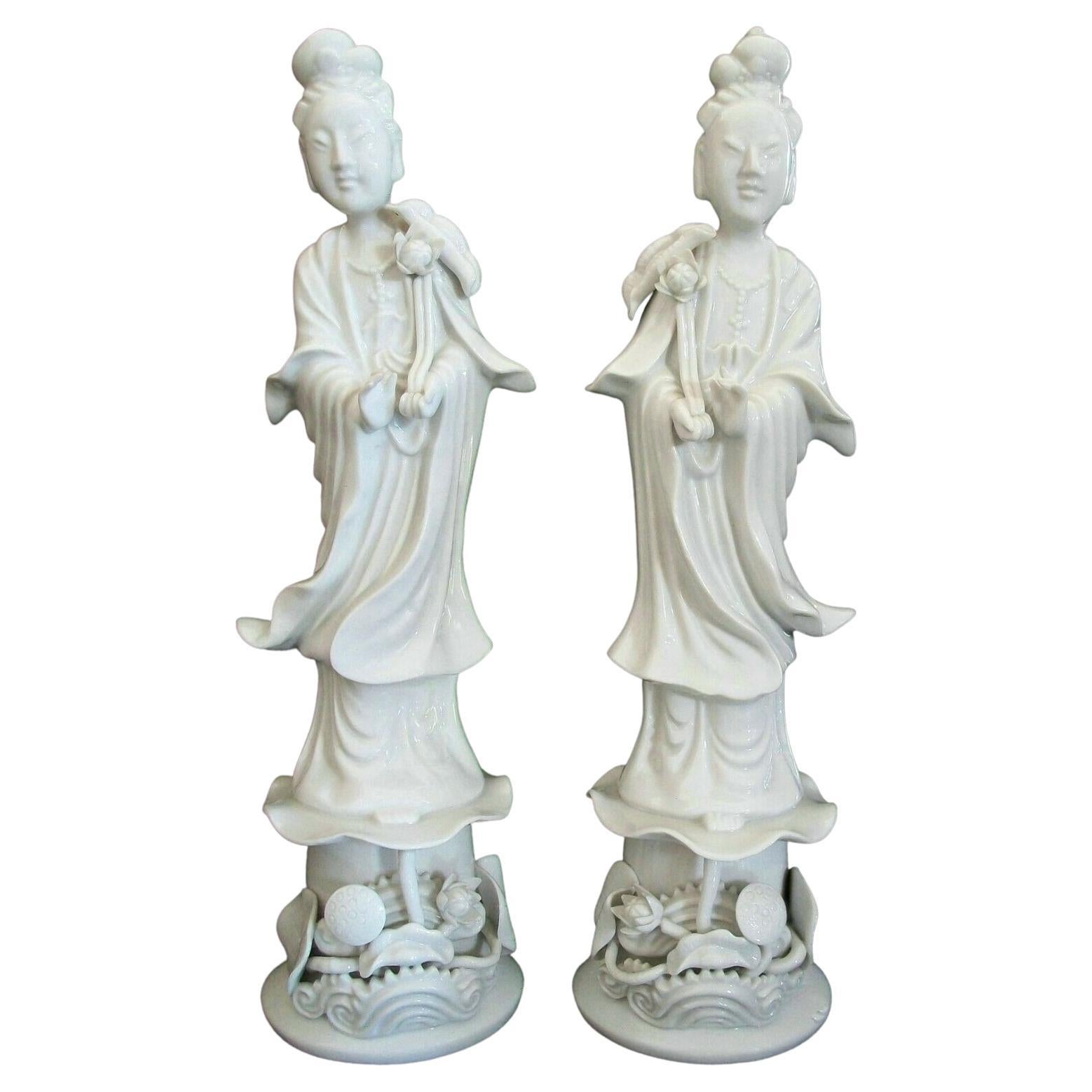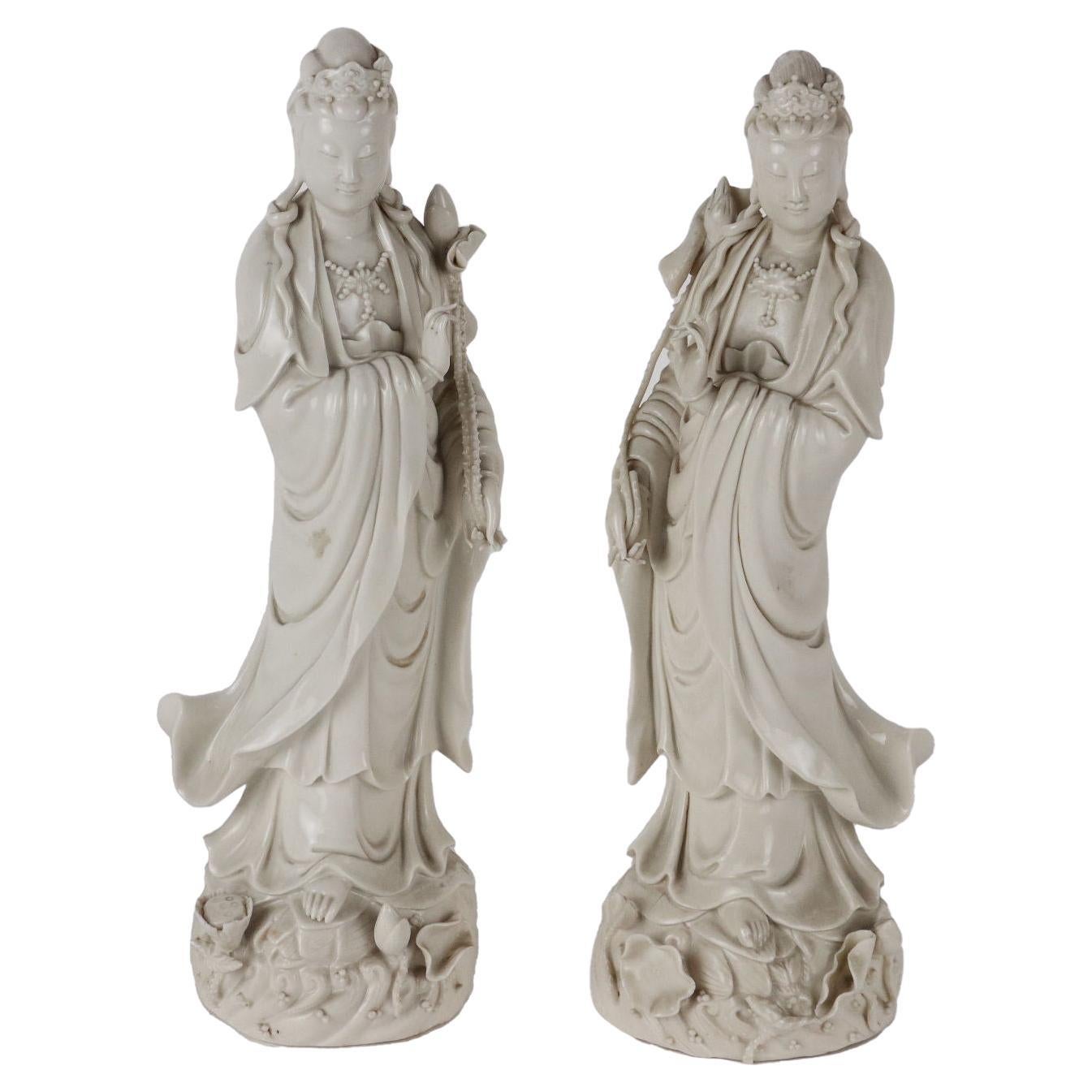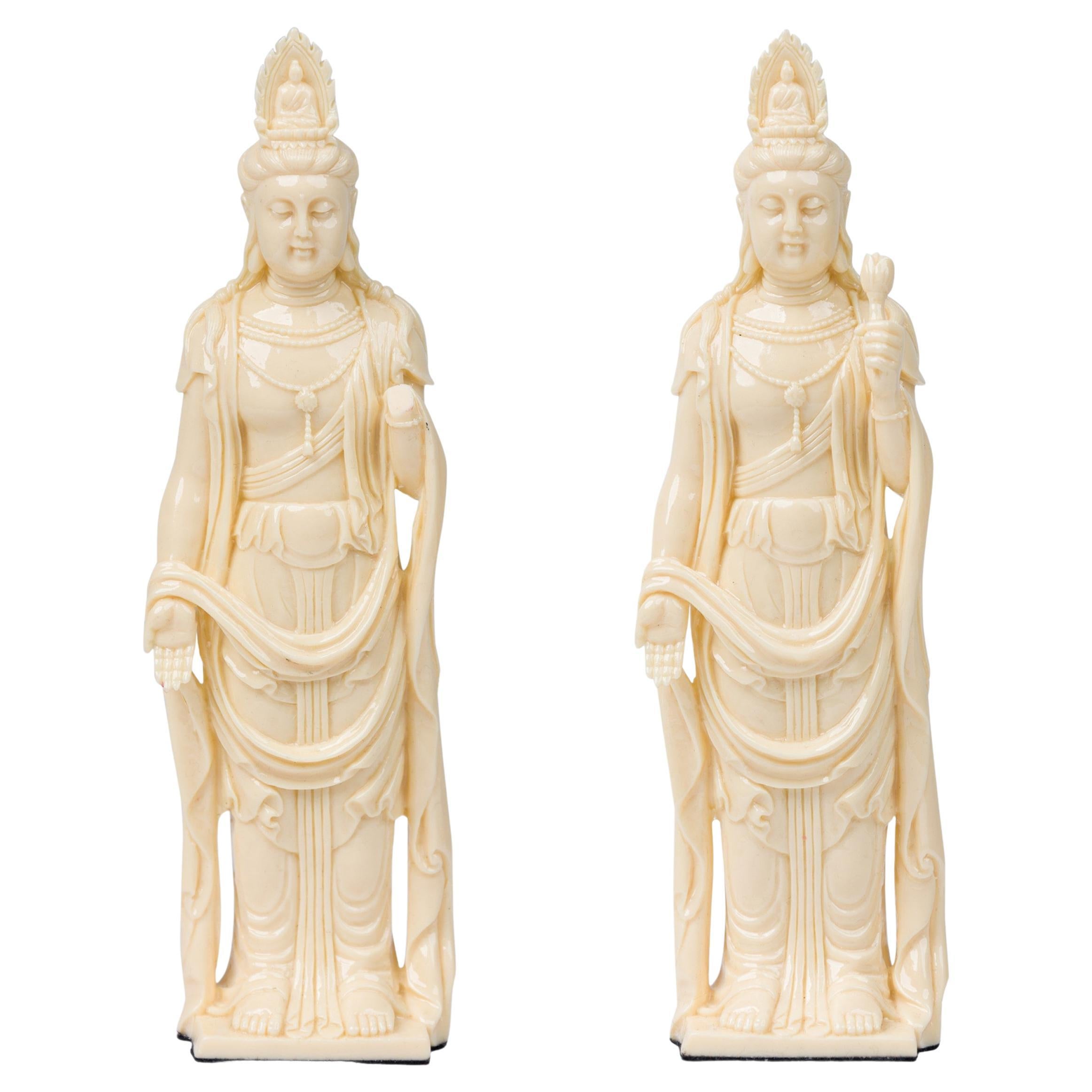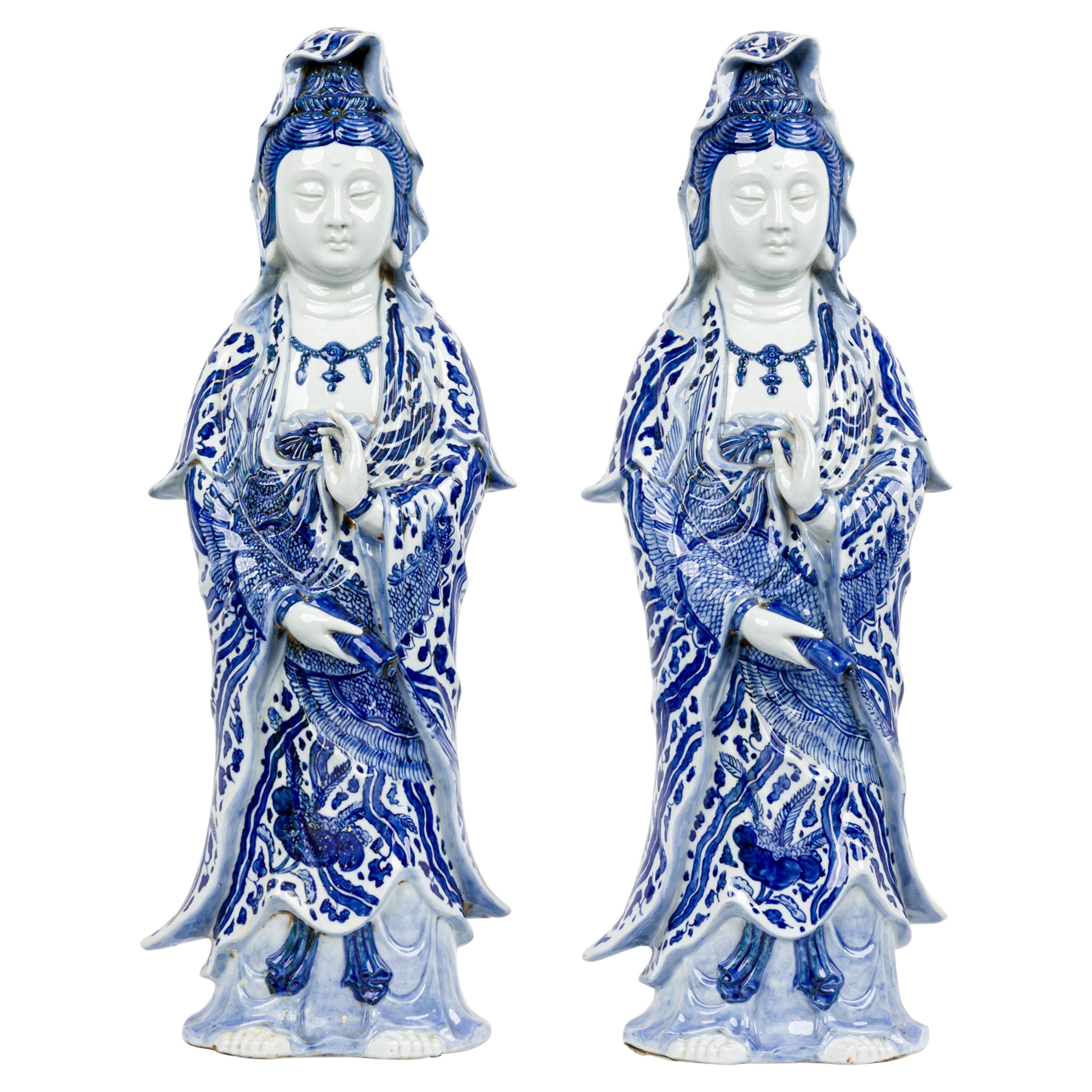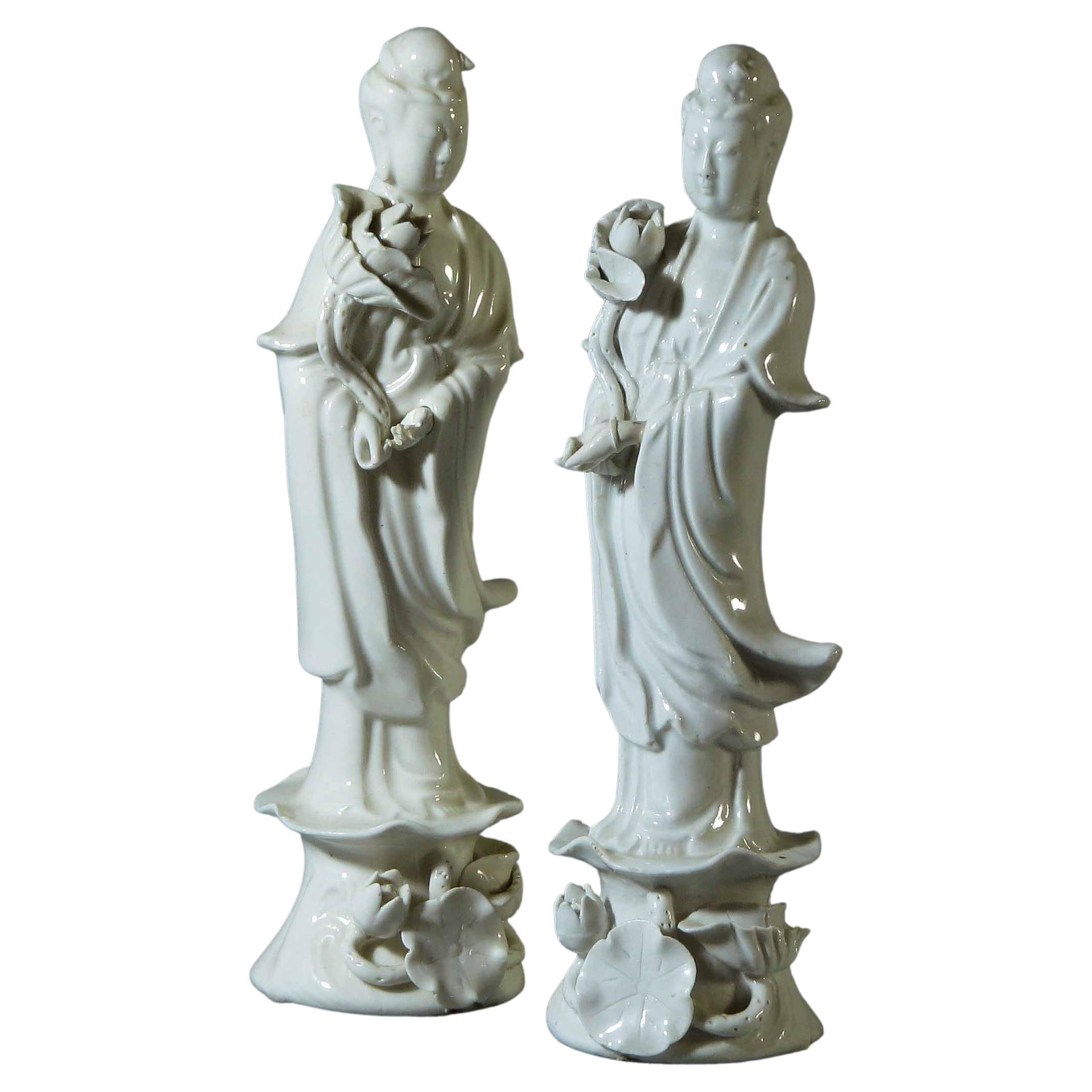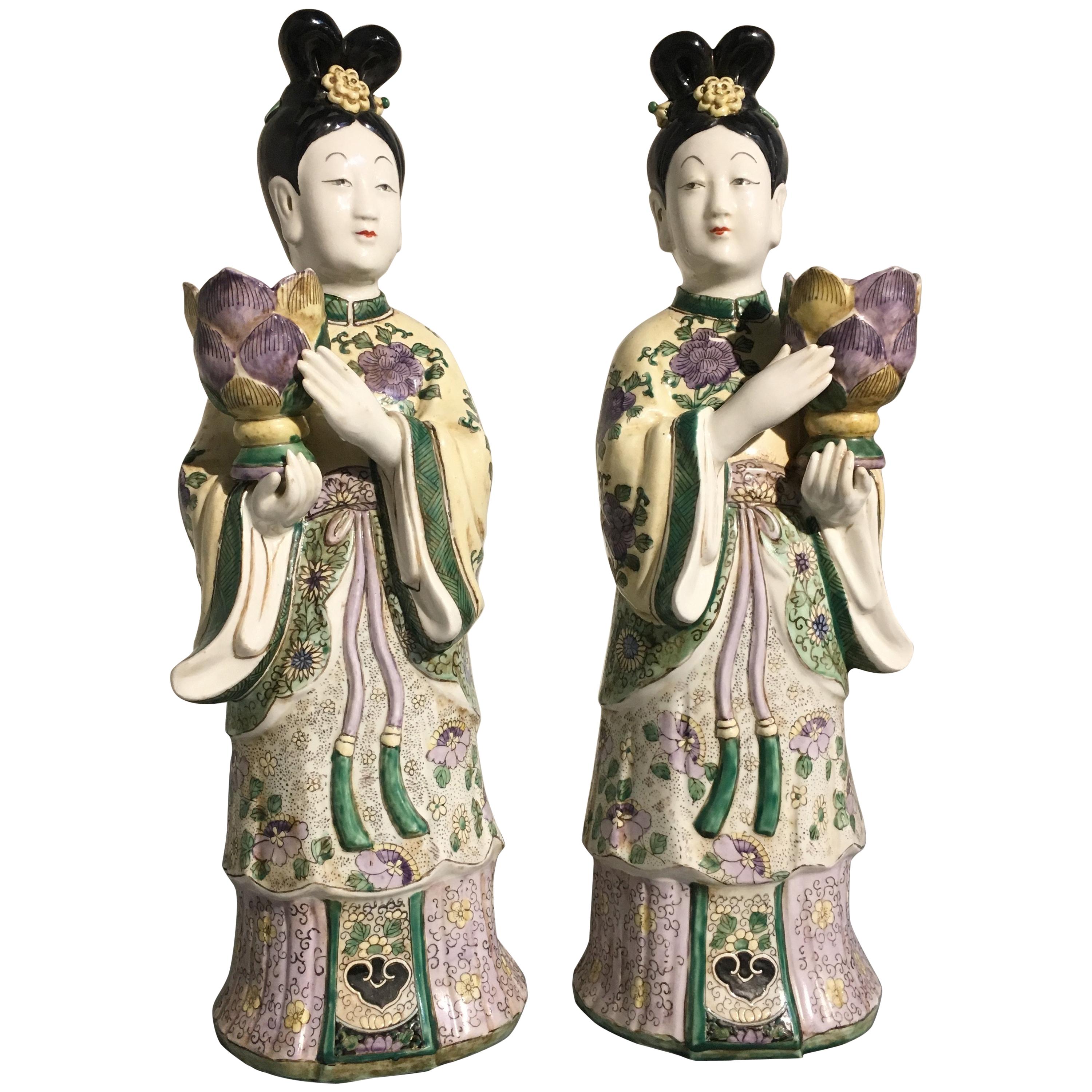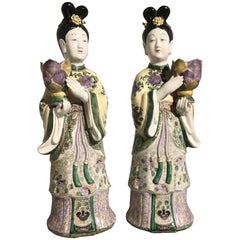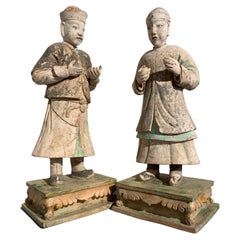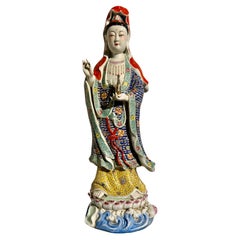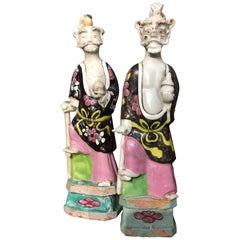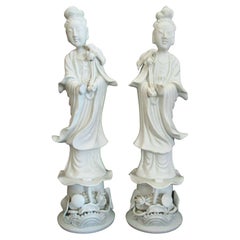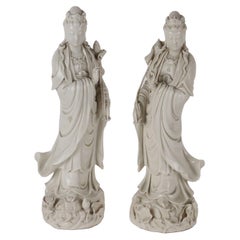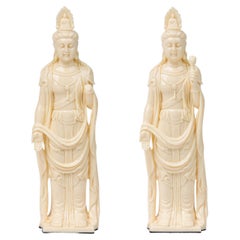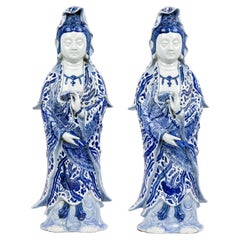Items Similar to Pair Chinese White Glazed Guanyin, Qing Dynasty, 18th Century, China
Want more images or videos?
Request additional images or videos from the seller
1 of 21
Pair Chinese White Glazed Guanyin, Qing Dynasty, 18th Century, China
$21,000per set
£16,055.62per set
€18,492.83per set
CA$29,427.44per set
A$32,852.97per set
CHF 17,214.46per set
MX$402,152.57per set
NOK 218,623.83per set
SEK 206,134.51per set
DKK 138,013.88per set
Shipping
Retrieving quote...The 1stDibs Promise:
Authenticity Guarantee,
Money-Back Guarantee,
24-Hour Cancellation
About the Item
A sublime and rare pair of Chinese white glazed porcelain figures of Guanyin, attributed to Tang Ying (1682 - 1756), Qing Dynasty, Qianlong Period, China.
This ethereal pair of white glazed porcelain figures depict the revered Buddhist Goddess of Mercy, Guanyin. Guanyin is portrayed standing, wearing heavy robes that drape beautifully around her figure. Bare feet peek out from under the hem of the robes. Her hair piled in a high chignon and covered by a cowl. The treatment of the hair, finely textured, unglazed, and with remnants of darker pigment, is typical of works by Tang Yin (1682 - 1756), who was the head of the imperial porcelain works at Jingdezhen.
Guanyin's beatific face is set in a serene smile, with a small, flat nose, and downcast, heavily lidded, almond shaped eyes. A simple beaded necklace graces her chest. Her hands held out, and may have once held attributes.
The hands were originally removable, but have since been permanently attached.
The figures crafted of a fine porcelain and glazed all over in a supple white glaze.
One figure bears a label from the Rafi Mottahedeh collection to the back.
Provenance:
Chinese Porcelain Company
Rafi Mottahedeh Collection
- Dimensions:Height: 13.25 in (33.66 cm)Width: 5 in (12.7 cm)Depth: 4 in (10.16 cm)
- Sold As:Set of 2
- Style:Qing (Of the Period)
- Materials and Techniques:Porcelain,Glazed
- Place of Origin:
- Period:
- Date of Manufacture:18th century
- Condition:Repaired: The hands, originally removable, now attached permanently. With restoration to the fingers. Wear consistent with age and use. In very good condition for age. The hands original, with restoration to the fingers, and now permanently attached.
- Seller Location:Austin, TX
- Reference Number:1stDibs: LU894731258272
About the Seller
5.0
Platinum Seller
Premium sellers with a 4.7+ rating and 24-hour response times
Established in 2001
1stDibs seller since 2010
345 sales on 1stDibs
Typical response time: <1 hour
- ShippingRetrieving quote...Shipping from: Austin, TX
- Return Policy
Authenticity Guarantee
In the unlikely event there’s an issue with an item’s authenticity, contact us within 1 year for a full refund. DetailsMoney-Back Guarantee
If your item is not as described, is damaged in transit, or does not arrive, contact us within 7 days for a full refund. Details24-Hour Cancellation
You have a 24-hour grace period in which to reconsider your purchase, with no questions asked.Vetted Professional Sellers
Our world-class sellers must adhere to strict standards for service and quality, maintaining the integrity of our listings.Price-Match Guarantee
If you find that a seller listed the same item for a lower price elsewhere, we’ll match it.Trusted Global Delivery
Our best-in-class carrier network provides specialized shipping options worldwide, including custom delivery.More From This Seller
View AllPair of Chinese Export Porcelain Court Lady Candle Holders, Mid-20th Century
Located in Austin, TX
A lovely pair of Chinese export porcelain candle holders in the form of court ladies holding lotus blossoms, mid 20th century, circa 1960's, China.
Modeled after 18th century Qianlo...
Category
Mid-20th Century Chinese Qing Sculptures and Carvings
Materials
Porcelain
Pair Large Chinese Ming Dynasty Glazed and Painted Pottery Figures, 16th Century
Located in Austin, TX
A striking pair of large Chinese glazed and painted pottery figures, Ming Dynasty (1368 to 1644), circa 16th century, China.
The impressive and realistically modeled figures each portrayed standing upright upon a sancai (three color) glazed pedestal of kang table form.
The man is dressed in a short black surcoat over a long robe and pants, a smart cap upon his head. His face is warm and welcoming, with wide eyes and a slight smile on his lips. He holds his hands out in front of him, palms up, almost as if shrugging, though presumably originally holding an object or offering, now lost.
The woman of slightly smaller stature, and dressed in a longer surcoat over a long robe and skirt. She wears a fitted cap upon her head. Her hands also held out in front, grasping long lost objects. Her face is slightly more severe, with a somewhat pinched look, and slight frown upon her lips.
The size of these figures is remarkable, as is the realism and attention to detail, almost as if they were modeled after real people, as opposed to the more common and generic Ming Dynasty pottery...
Category
Antique 16th Century Chinese Ming Sculptures and Carvings
Materials
Pottery
Chinese Famille Rose Enameled Porcelain Guanyin, Zeng Longsheng, 1980's, China
Located in Austin, TX
A large and vibrantly decorated Chinese famille rose enameled porcelain figure of Guanyin, marked Zeng Longsheng (1901 - 1964), but of later manufacture...
Category
Vintage 1980s Chinese Qing Sculptures and Carvings
Materials
Porcelain
Pair Chinese Export Famille Rose Figures of Immortals, 18th Century, China
Located in Austin, TX
A near pair of Chinese export porcelain figures of the Taoist immortal Li Tieguai, Qing Dynasty, late 18th century, China.
The Daoist Immortal Li Tieguai, on of the Eight Immortals...
Category
Antique Late 18th Century Chinese Chinese Export Ceramics
Materials
Porcelain
Pair of Vintage Blanc de Chine Figures of Guanyin Riding an Elephant and Lion
Located in Austin, TX
A lovely pair of Chinese Blanc de Chine figures of Guanyin (Avalokiteshvara) seated upon animals, Republic Period, circa 1930s.
Guanyin, the Bo...
Category
Vintage 1930s Chinese Chinoiserie Sculptures and Carvings
Materials
Porcelain
Chinese Carved Boxwood Figure of Guanyin, Mid-Qing Dynasty
Located in Austin, TX
A sublime Chinese carved boxwood figure of the Bodhisattva of Compassion, Avalokiteshvara, called Guanyin in Chinese, mid-Qing dynasty.
The an...
Category
Antique Late 18th Century Chinese Qing Sculptures and Carvings
Materials
Boxwood
You May Also Like
Vintage Pair of 'Blanc De Chine' Porcelain Guanyin Statues, China, circa 1950
Located in Chatham, ON
Fine vintage pair of 'Blanc de Chine' porcelain Guanyin statues - each figure holding an applied flower and standing on a lotus leaf and decorative stan...
Category
Mid-20th Century Chinese Chinese Export Ceramics
Materials
Porcelain
Pair of Sculptures Guanyin Ceramic China, 1912-1949
Located in Milano, IT
Pair of Guanyin sculptures in Dehua porcelain "blanc de chine". The two mirror figures of the goddess of compassion resting on bases of flowers and l...
Category
20th Century Italian Mid-Century Modern Figurative Sculptures
Materials
Ceramic
Pair of Chinese Beige Kwanyin Figurines
Located in Queens, NY
PAIR of Similar Chinese beige plastic robed, beaded figurine depicting the Buddhist Goddess with left arm raised, grasping a lotus, right arm relaxed w...
Category
20th Century Chinese Sculptures and Carvings
Materials
Plastic
$240 / set
Pair of Chinese Porcelain Standing Figures
Located in Queens, NY
PAIR of Asian Chinese style blue and white porcelain standing figures (19/20th Cent)
Category
Antique 19th Century Chinese Chinese Export Figurative Sculptures
Materials
Porcelain
$4,250 / set
Pair of Blanc-de-Chine Dehua Figures of Guanyin
Located in Ottawa, Ontario
A Pair Of Blanc - De - Chine Dehua
Figures Of Guanyin
Early 20th century
Each figure is modelled standing in flowing robes
upon a lotus leaf decorated stand,
holding a fl...
Category
Early 20th Century Chinese Chinese Export Figurative Sculptures
Materials
Porcelain
Blanc-de Chine Figure of Guanyin, Qing Dinasty
Located in Rome, IT
A Blanc-de Chine Figure of Guanyin Qing Dinasty
standing on a the waves, the arms lifted to the waist, dressed in loose fitting robes opening at the ch...
Category
Antique 18th Century and Earlier Chinese Ceramics
More Ways To Browse
Small Chinese Ceramics
Century Furniture Company Asian Furniture
White Furniture Company Antique
Antique Chinese Robe
Chinese Qing Figure
18th Century Porcelain Figures
Chinese Glazed Figure
18th Century Chinese Figures
Qing Dynasty Imperial
Asian Goddess
Antique Chinese Beads
Small Asian Chest
Chinese Guanyin
Qing Dynasty Robe
Antique Chinese Necklace
Chinese Goddess
Antique Guanyin
Goddess Of Mercy
